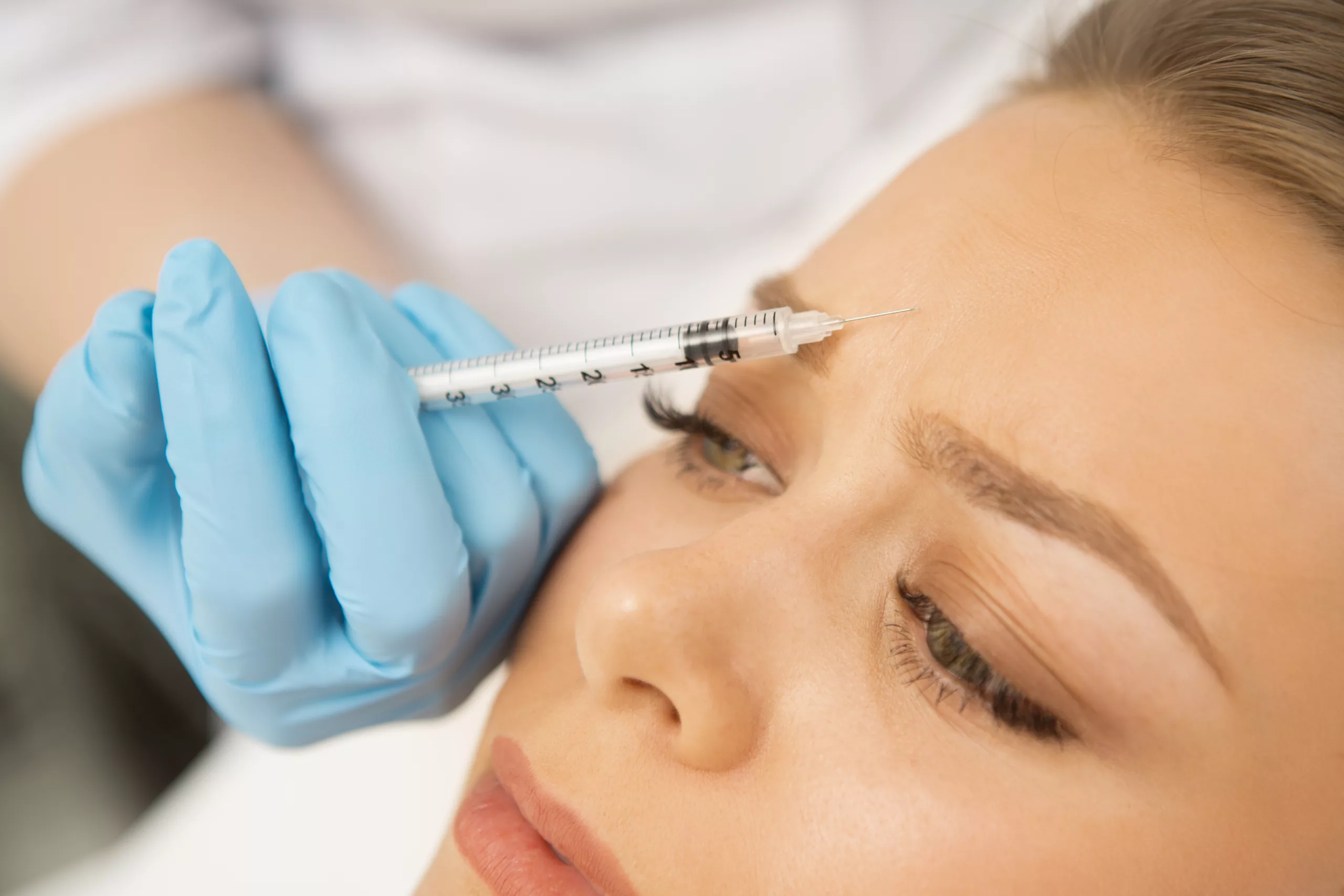
The reigning champion of non-invasive cosmetic treatments in 2022 was Botulinum toxin, widely recognized by its trade name Botox®. Over 7.3 million treatments were administered globally throughout the year, solidifying it as the go-to procedure for those seeking aesthetic enhancements without surgery. Before you get Botox® in Las Vegas, educate yourself on the botox 101 basics of this popular procedure.
- Botox 101: what is botox?
- What exactly does Botox® do?
- What is the difference between Botox®, Xeomin®, Dysport®, and Jeuveau?
- How long does Botox® last?
- Do Botox® injections hurt?
- Is Botox® treatment good?
- Which wrinkles on my face can I treat with Botox®?
- Will I see Botox® results quickly?
- What happens during a Botox® procedure?
- How many units of Botox® will I need?
- Is there downtime when getting Botox®?
- What are the side effects of Botox®?
- Will my face look unnatural with Botox®?
- What are the rules after getting Botox®?
- What questions should I ask when getting Botox® in Las Vegas?
- The Bottomline
Botox 101: what is botox?
Botox® is a pharmaceutical substance used cosmetically to reduce the appearance of wrinkles by temporarily paralyzing facial muscles. The term is derived from the botulinum toxin produced by the bacterium Clostridium botulinum. Beyond cosmetic applications, Botox® also treats various medical conditions, including chronic migraines, excessive sweating, and some muscle disorders.
What exactly does Botox® do?
Botox® blocks the nerve signals in the muscles where it is injected. When those nerve signals are interrupted, the affected muscle is temporarily paralyzed or frozen. Without the movement of these muscles in the face, wrinkles and lines may soften and even disappear. In therapeutic settings, this paralysis helps relieve symptoms associated with muscle stiffness, spasms, or excessive muscle contractions in various conditions.
What is the difference between Botox®, Xeomin®, Dysport®, and Jeuveau?
Botox®, Xeomin®, Dysport®, and Jeuveau are all injectable neuromodulators that use botulinum toxin to treat wrinkles and various medical conditions. However, Xeomin is unique in that it contains only a single ingredient, botulinum toxin A, without added proteins. On the other hand, Botox®, Dysport, and Jeaveau have a combination of botulinum toxin and proteins.
How long does Botox® last?
The duration of Botox®’s effects can vary, but most individuals can expect the results to last approximately four to six months. Over time, muscle action gradually returns, leading to the reappearance of wrinkles and the return of migraines and sweating.
Do Botox® injections hurt?
The needles for administering Botox® are notably fine, typically causing minimal discomfort, if any. Patients often liken the sensation during the procedure to a minor pinch or sting.
Is Botox® treatment good?
Botox® is a good treatment option when administered responsibly and in the right circumstances. The treatment is FDA-approved for various medical and cosmetic uses but carries potential risks and side effects. The efficacy and safety largely depend on the individual’s health, the skill of the healthcare provider, and the specific condition being treated.
Which wrinkles on my face can I treat with Botox®?
Botox® is particularly effective for treating dynamic wrinkles or the lines that form from repetitive facial movements. Common areas include the forehead lines, frown lines between the eyebrows, and crow’s feet around the eyes.
Will I see Botox® results quickly?
The initial results of Botox® treatment generally become noticeable within three to four days following the procedure. The complete effects of the treatment are typically fully evident after ten to 14 days, revealing a more refreshed and rejuvenated appearance.
What happens during a Botox® procedure?
During a Botox® procedure, the patient will typically sit comfortably and upright. The healthcare provider will clean the targeted areas of the skin and may also briefly apply a topical anesthetic or ice pack to minimize discomfort. The provider will inject small amounts of botulinum toxin using a fine needle into specific muscles identified for treatment. The entire process usually takes only a few minutes.
How many units of Botox® will I need?
The required number of units of Botox® can vary, depending on the individual’s facial muscle strength, the depth of their wrinkles, and the desired effect. A standard range for comprehensive facial treatments lies between 20 and 40 units.
Is there downtime when getting Botox®?
One of the advantages of Botox® is the minimal downtime required after the procedure. Most patients can resume their regular activities right after the injections.
What are the side effects of Botox®?
The most common side effects of Botox® are temporary and may include swelling, bruising, or redness at the injection sites. Some patients report a mild headache or flu-like symptoms after the treatment. In rare cases, Botox® may cause muscle weakness, drooping eyelids, or eyebrow asymmetry.
Will my face look unnatural with Botox®?
The concern of an unnatural look from Botox® treatments often stems from the potential for overuse or incorrect placement of the injections. With too much Botox® in inappropriate muscle groups, it can lead to an overly ‘frozen’ appearance that limits the facial expressions of the patient.
Achieving a natural-looking result relies heavily on the skill and experience of the healthcare provider, who must understand the facial muscles’ anatomy and the appropriate dosing required for various treatment areas.
What are the rules after getting Botox®?
After receiving Botox® treatments, patients must follow “rules” to get optimal results and to minimize side effects. Patients should avoid touching or massaging the treated areas for at least 24 hours to prevent spreading the toxin to unintended muscles. Strenuous physical activity, exposure to heat, or lying down flat are also not allowed.
Avoid blood-thinning medication and alcohol, which could exacerbate bruising. Furthermore, apply ice or a cold pack to any swelling and immediately report any serious or long-lasting side effects to the healthcare provider. As for the frequency of treatments, professionals recommend waiting at least three to six months between Botox® sessions.
What questions should I ask when getting Botox® in Las Vegas?
When seeking the best Botox® Las Vegas has to offer, it’s crucial to ask the right questions. Some important questions to consider asking include:
- What is your experience with Botox® treatments?
- Can I see before and after photos of previous patients?
- What are the potential risks and side effects associated with Botox®?
- How do you determine the appropriate dosage for each treatment area?
- What is your policy for touch-ups or corrections if necessary?
Additionally, it’s essential to research the provider’s qualifications and ensure they are licensed and trained in administering Botox®.
The Bottomline
Botox® has been around for decades, and its popularity shows no signs of waning. While it’s generally considered a safe and effective treatment, it’s crucial to do your part in ensuring optimal results and minimizing potential risks. Select a reputable provider and follow all pre and post-treatment instructions, and you’ll be on your way to a more youthful appearance.

